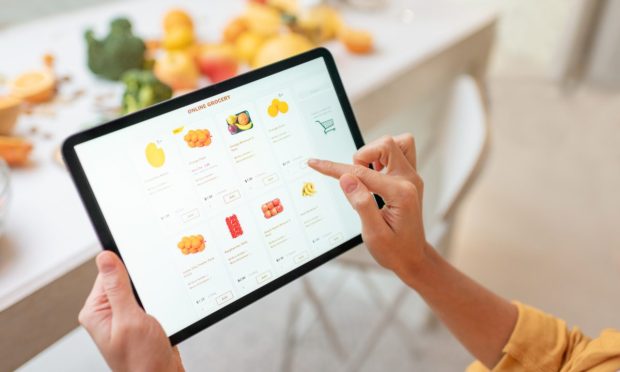Data Shows Traditional Grocery Going the Way of Brick-and-Mortar Retail

Online grocery may be a significantly younger category than other kinds of eCommerce, and adoption may be lower, but grocers would be best served to learn from the lessons of traditional retailers in decades prior. As consumers shift online, category by category, grocers may soon find their aisles far emptier than they are prepared for.
Certainly, the majority of consumers still opt to do the bulk of their grocery shopping in stores. Research from PYMNTS’ 2021 study “What Consumers Expect From Their Grocery Shopping Experiences,” created in collaboration with ACI Worldwide, which surveyed more than 2,300 United States grocery shoppers about their buying behaviors, found that 18% of grocery shoppers prefer buying digitally to shopping in stores.
Read more: Digital Features Can Help Grocers Win Over 43% of Shoppers
However, a significant share of consumers has been exploring eGrocery options. According to data from the July edition of PYMNTS’ ConnectedEconomy™ series, “The ConnectedEconomy™ Monthly Report: The Rise of the Smart Home,” which drew from a survey of more than 2,600 U.S. consumers, 40% order groceries online for home delivery every month. Additionally, 16% do so every week.
eCommerce is slowly gaining share, product category by product category.
“Subscription services such as Amazon Subscribe & Save and [direct-to-consumer (D2C)] specialty brands are whittling away the center aisle purchases from grocery stores — of course, at different paces with different merchants in different countries — and will for some time,” PYMNTS’ Karen Webster observed in a recent feature.
See more: How to Catch the Next Wave of Digital Transformation
Brick-and-mortar grocers may still retail the lion’s share of sales of produce, meat and other fresh items, but as online players pick off their consumer-packaged goods (CPG) customers one by one, traditional grocers will be left with only a fraction of the sales they once had.
So, what is a grocer to do? While smaller players may never be able to offer the low prices that an eCommerce giant such as Amazon can, leading grocers are already looking to convert their in-store customers to omnichannel shoppers, challenging Amazon with their own delivery subscriptions.
Kroger, for one, the largest U.S. pure-play grocery retailer, announced in July the nationwide launch of its Boost membership program, which had already gone live in select areas. The offering provides free grocery delivery, double rewards points for fuel and other perks for a set annual fee ($59 for the basic package or $99 to include free two-hour delivery). Albertsons, too, has its FreshPass subscription with free delivery, gas savings, and other perks and benefits.
Read more: Kroger Joins the Members-Only Deal Club
Most consumers are open to such subscription offerings if the price is right. According to data from the May edition of PYMNTS’ “Subscription Commerce Conversion Index,” created in collaboration with subscription eCommerce platform sticky.io, 56% of consumers would be interested in a grocery subscription if product prices were lower.
See more: Inflation Prompts 10x Increase in Consumers Reevaluating Subscription Value
It remains to be seen how smaller grocers that do not have the ability to roll out their own subscription offerings at competitive prices will address the loss of their customers, category by category, to these eCommerce players, but it is certain that the future of grocery will not be tied to the physical store in the same way.
